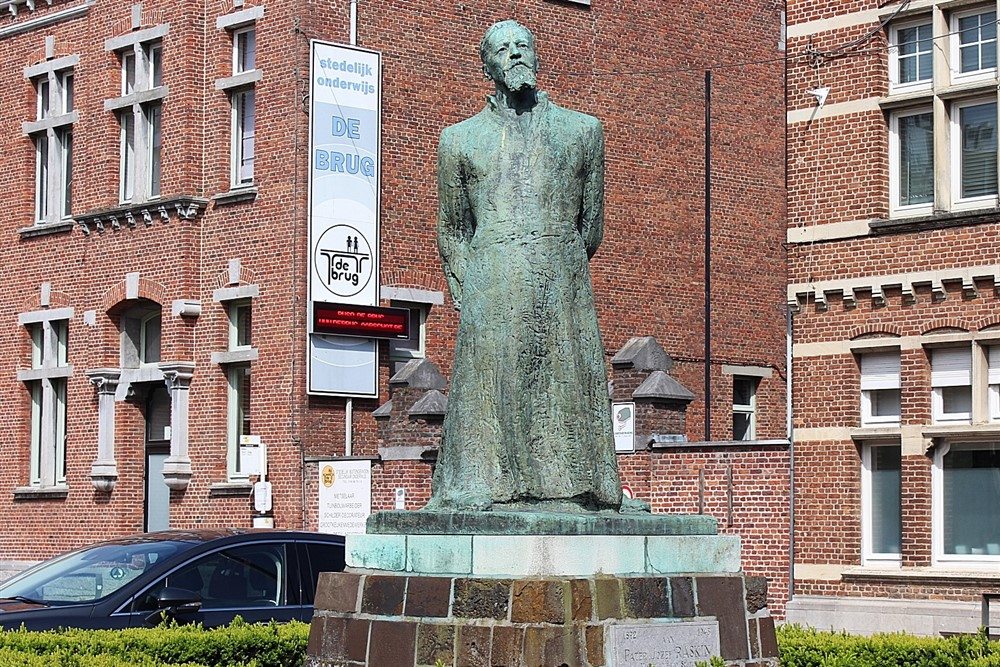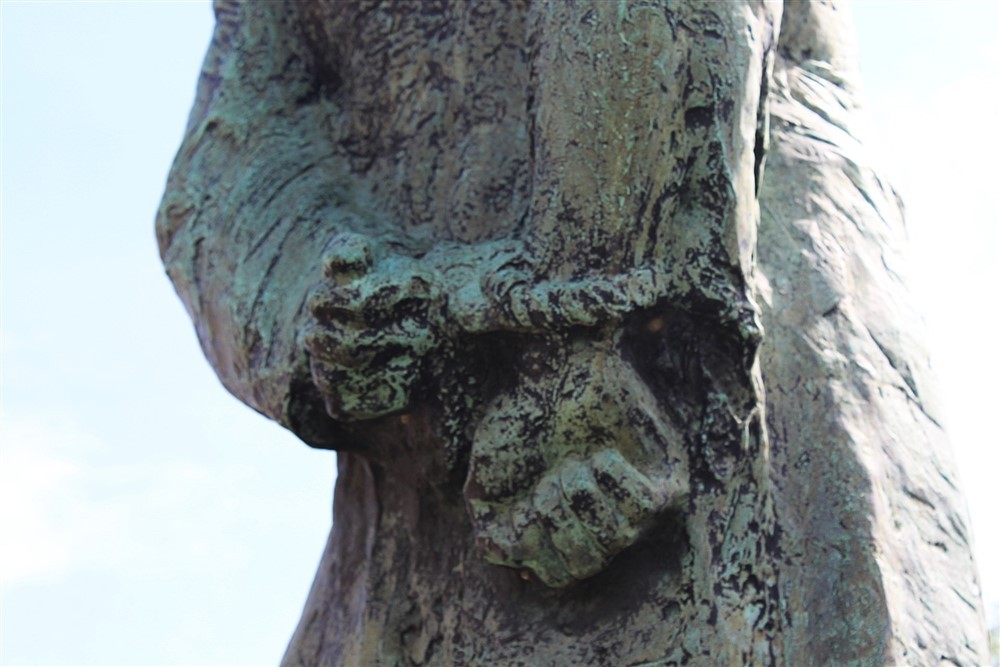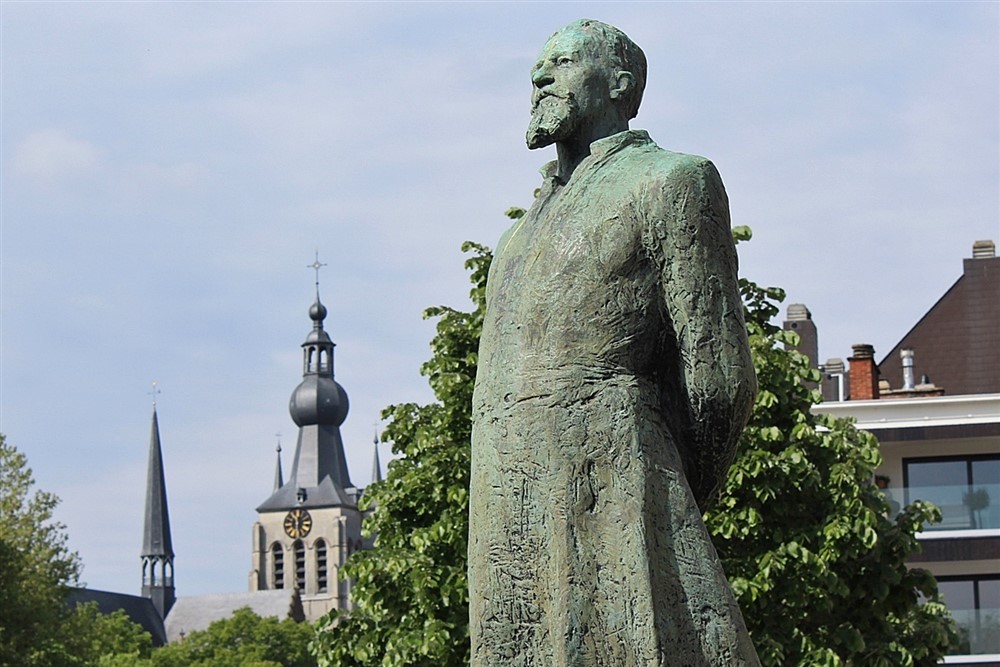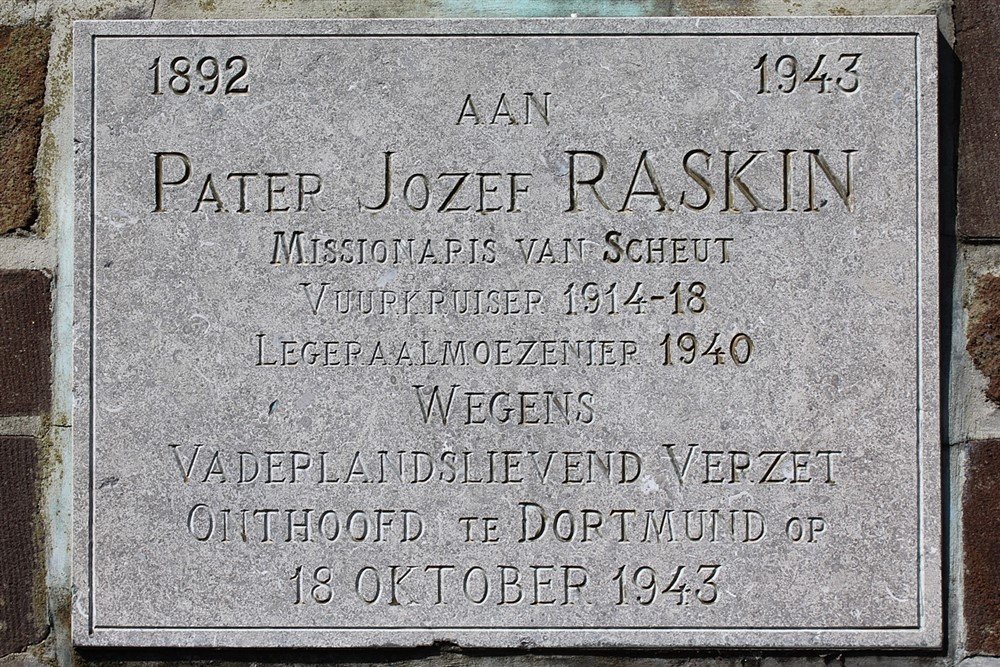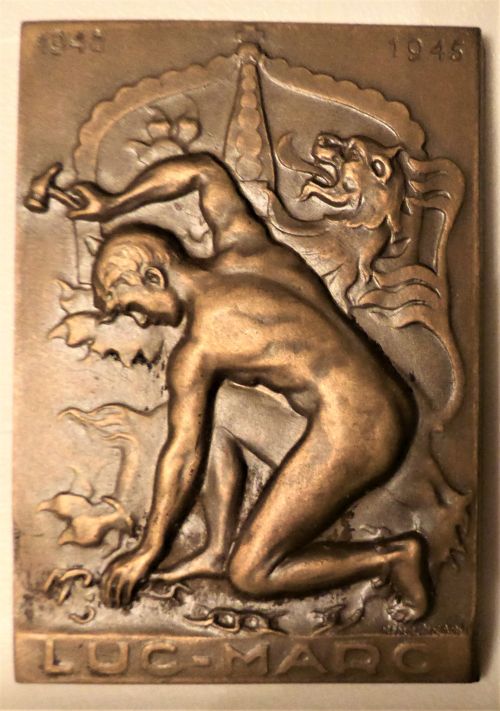Sculpture Father Jozef Raskin Aarschot
Father Joseph Raskin was chaplain to King Leopold III and first-time resistance fighter. On October 18, 1943 he was beheaded by the Germans in Dortmund.
The facts
At the beginning of World War II, Father Jozef Raskin was chaplain and confidant of King Leopold III. After the Belgian surrender, he quickly became active in the resistance group Leopold Vindictive 200. The group is engaged in mapping the German army installations on the Belgian coast. The messages were sent by carrier pigeon with a tube on her leg and in it an extremely thin piece of paper with detailed reverse and illustrated with maps on German positions. However, Raskin was arrested as early as May 1, 1942. He was transferred from one prison in Germany to another for more than a year before finally being beheaded in Dortmund on October 18, 1943. His two buddies in the resistance, Arsenic Debaillie and Hector Joye, are executed together with him.
Father Raskin had already served in the Belgian army during the First World War and he also led an eventful soldier's life in it. He was mobilized as a stretcher and captured during a bicycle ride in German-occupied territory. He was able to escape from the fort of La Chartreuse in Liège and only came to the Yser in 1915. Having a skilled drawing pen and keen observation skills, he was conscripted into the intelligence service. As a scout, he accurately mapped the enemy outposts, thereby increasing the effect of the Belgian artillery. Several times he risked his life with a heroism for which he was distinguished even then.
The image
The bronze statue of Father Jozef Raskin is located on the Hoogbrug in Aarschot in a place that was originally intended for another hero of the First World War, namely mayor Jozef Tielemans. Political arguments were the reason that a statue for Tielemans was never placed here.
In his own words, the sculptor Tony Blickx worked on the statue with trepidation and respect. Blickx records the moment when this World War II resistance hero, with his hands tied behind his back, takes the floor at the Nazi Volksgerichtshof and says: "im Gewissen und vor Gott habe Ich meine Pflicht getan".
Do you have more information about this location? Inform us!
Source
- Text: Jan Rymenams
- Photos: Jan Rymenams
Related books
Nearby
Museum
- Stedelijk Museum, Room "War and destruction" Aarschot - Aarschot
- Allied Forces Museum Herselt - Herselt
- House of the Franco-Belgian Resistance - Tielt-Winge
Point of interest
- Grote Markt Aarschot - Aarschot
- Glass Window Church Of Our Lady Aarschot - Aarschot
- Peace Carillon Aarschot - Aarschot
Monument
- OSB House Uytterhoeven Aarschot - Aarschot
- Monument Jozef Tielemans Aarschot - Aarschot
- Memorial Stone Anna Persy Aarschot - Aarschot
Cemetery
- Belgian War Graves Aarschot - Aarschot
- Belgian Graves Veterans Aarschot - Aarschot
- Commonwealth War Graves Langdorp - Langdorp (Aarschot)
